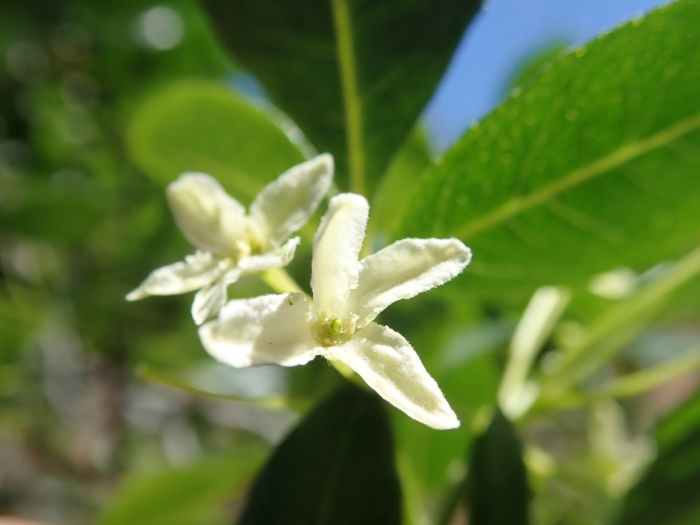California Hoptree
(Ptelea crenulata)
California Hoptree (Ptelea crenulata)
/
/

joergmlpts
CC BY 4.0
Image By:
joergmlpts
Recorded By:
Copyright:
CC BY 4.0
Copyright Notice:
Photo by: joergmlpts | License Type: CC BY 4.0 | License URL: http://creativecommons.org/licenses/by/4.0/ | Rights Holder: joergmlpts | Publisher: iNaturalist | Date Created: 2021-05-04T19:50:04Z |




















































Estimated Native Range
Summary
Ptelea crenulata, commonly known as California Hoptree, is a deciduous shrub or small tree native to the chaparral and woodlands of California, particularly in the Coast Ranges and the Sierra Nevada foothills. It typically grows to a height of 10-20 feet (3-6 meters) and a similar spread, with a rounded form and dense branching. The California Hoptree has dark green, shiny, and notably crenulated (scalloped) leaves that provide a lush appearance. Its small, cream-colored flowers bloom in late spring to early summer and are modestly showy, with a pleasant fragrance that attracts a variety of pollinators. The plant also produces winged fruits that resemble those of hops, hence the common name.
The California Hoptree is valued for its drought tolerance and ability to thrive in dry, well-drained soils, making it an excellent choice for water-wise gardens and naturalistic landscapes. It is also used in habitat restoration projects where its local ecological contributions are important. The plant’s adaptability to different light conditions, from full sun to part shade, and its low water requirements once established, make it a versatile addition to California native plant gardens. While it is not commonly afflicted by serious diseases or pests, it can occasionally suffer from root rot in poorly drained soils.CC BY-SA 4.0
The California Hoptree is valued for its drought tolerance and ability to thrive in dry, well-drained soils, making it an excellent choice for water-wise gardens and naturalistic landscapes. It is also used in habitat restoration projects where its local ecological contributions are important. The plant’s adaptability to different light conditions, from full sun to part shade, and its low water requirements once established, make it a versatile addition to California native plant gardens. While it is not commonly afflicted by serious diseases or pests, it can occasionally suffer from root rot in poorly drained soils.CC BY-SA 4.0
Plant Description
- Plant Type: Tree, Shrub
- Height: 6.5-15 feet
- Width: 6-12 feet
- Growth Rate: Moderate
- Flower Color: Cream
- Flowering Season: Spring
- Leaf Retention: Deciduous
Growth Requirements
- Sun: Full Sun, Part Shade
- Water: Low
- Drainage: Medium, Fast
Common Uses
Bee Garden, Bird Garden, Butterfly Garden, Drought Tolerant, Fragrant, Low Maintenance
Natural Habitat
Native to the chaparral and woodlands of California
Other Names
Common Names:
Scientific Names: , Ptelea crenulata, Ptelea baldwinii var. crenulata, Ptelea baldwinii subsp. crenulata, Ptelea cinnamomea, Ptelea cycloloma, Ptelea bullata, Ptelea brevistylis, Ptelea ovalifolia, Ptelea trifoliata subsp. crenulata,
GBIF Accepted Name: Ptelea crenulata Greene